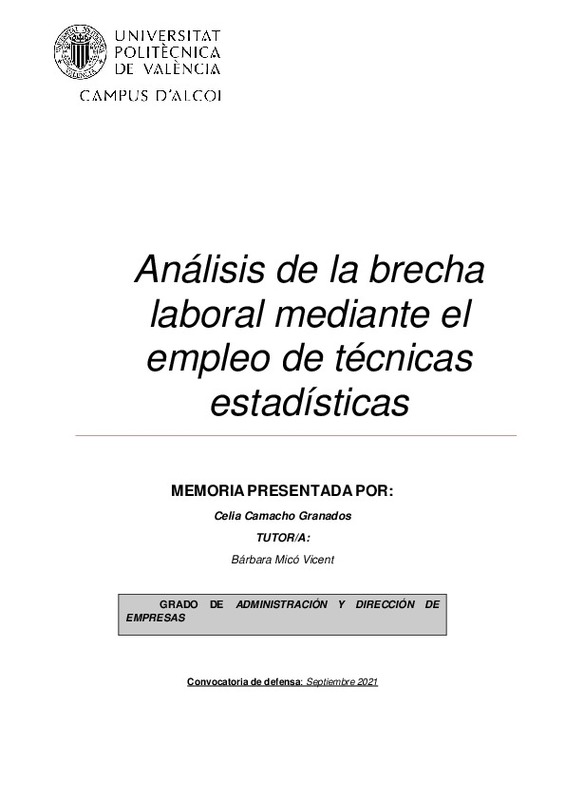JavaScript is disabled for your browser. Some features of this site may not work without it.
Buscar en RiuNet
Listar
Mi cuenta
Estadísticas
Ayuda RiuNet
Admin. UPV
Análisis de la brecha laboral mediante el empleo de técnicas estadísticas
Mostrar el registro completo del ítem
Camacho Granados, C. (2021). Análisis de la brecha laboral mediante el empleo de técnicas estadísticas. Universitat Politècnica de València. http://hdl.handle.net/10251/176048
Por favor, use este identificador para citar o enlazar este ítem: http://hdl.handle.net/10251/176048
Ficheros en el ítem
Metadatos del ítem
| Título: | Análisis de la brecha laboral mediante el empleo de técnicas estadísticas | |||
| Autor: | Camacho Granados, Celia | |||
| Director(es): | ||||
| Entidad UPV: |
|
|||
| Fecha acto/lectura: |
|
|||
| Resumen: |
[ES] A pesar de que la brecha laboral entre hombres y mujeres ha disminuido en las últimas décadas en varios países europeos, la desigualdad sigue siendo significativa. Esta diferencia representa uno de los objetivos en ...[+]
[EN] Despite the fact that the employment gap between men and women has decreased in
recent decades in several European countries, inequality is still significant. This
difference represents one of the objectives on which ...[+]
|
|||
| Palabras clave: |
|
|||
| Derechos de uso: | Reserva de todos los derechos | |||
| Editorial: |
|
|||
| Titulación: |
|
|||
| Tipo: |
|
recommendations
Este ítem aparece en la(s) siguiente(s) colección(ones)
-
EPSA - Trabajos académicos [5826]
Escuela Politécnica Superior de Alcoy







